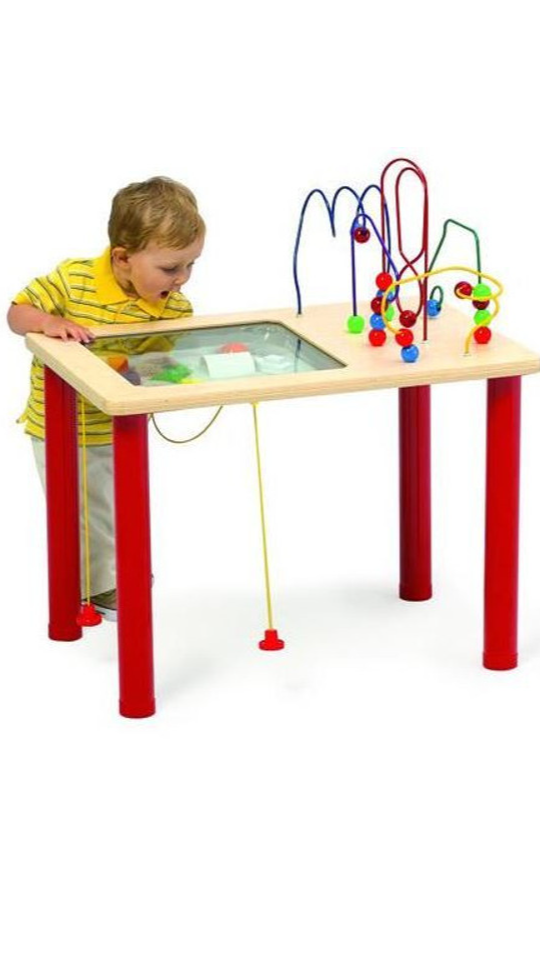Transform stressful waiting rooms into engaging learning spaces with Little People’s Cove’s commercial-grade toys and sensory wall panels. Their durable, interactive equipment promotes child development while creating positive experiences that families remember and businesses benefit from.

Modern waiting rooms are changing from sterile, stress-inducing spaces into engaging environments where children can learn and develop while they wait. Little People's Cove stands at the forefront of this change, offering high-quality, commercial-grade waiting room toys and furniture that stimulate young minds while addressing practical business needs.
As a parent, I've watched my child become restless and anxious in countless waiting rooms. That's exactly why businesses with thoughtfully designed kids' areas remain memorable. The right toys don't simply occupy children—they foster positive connections with your business that families remember well after leaving.
The contrast between a basic waiting room and one furnished with Little People's Cove products is clear immediately. Their waiting room toys serve as carefully designed tools that stimulate children's developing minds while meeting the practical needs of businesses.
What makes their waiting room solutions stand out is how they balance entertainment with development. Children aren't merely passing time—they're developing essential skills through play. Meanwhile, parents can fill out forms, talk with staff, or simply relax without needing to constantly entertain their children.
Many children feel anxious in waiting rooms. Unfamiliar surroundings, strange noises, and uncertainty about what happens next can make even short waits stressful. Interactive toys offer effective distractions that shift children's attention from worries to engaging activities.
A well-designed play area protects children from potential stressors. When kids focus on manipulating sensory wall panels or engaging in group play, they're less likely to worry about the uncertainty of waiting. This emotional self-regulation through play proves especially valuable in medical settings where children might connect waiting with upcoming procedures.
In today's competitive business environment, every customer interaction matters. When families enter your waiting area and find an engaging, thoughtfully designed space for their children, they form immediate positive impressions about your business values. This subtle yet powerful message shows you understand and care about the entire family's needs.
The benefits extend well beyond the initial wait time. Families talk about their experiences with friends, post photos on social media, and decide about future visits based on how comfortable their children felt. A dental office with an engaging sensory wall might become known as 'the fun dentist' in family discussions, generating word-of-mouth referrals from a modest investment.
While digital tablets might seem like a simple solution for waiting rooms, sensory wall panels offer notable advantages. Unlike screen time's passive entertainment, sensory panels actively involve children's minds and bodies. These wall-mounted activities include various textures, colors, movements, and sometimes sounds that stimulate multiple senses at once.
The value of sensory wall panels comes from their versatility. A quality panel might feature spinning gears, sliding beads, textured surfaces, and visual puzzles—all in a compact wall-mounted format that preserves valuable floor space. Children naturally prefer these hands-on experiences to digital options.
Effective waiting room toys should do more than momentarily distract—they should support developmental growth. Search for toys that involve children in activities building fine motor skills, problem-solving abilities, and creative thinking. Good examples include:
The most valuable waiting room toys allow open-ended play instead of dictating a single correct approach. This method encourages children to investigate, test, and learn—transforming waiting time into learning opportunities.
Unlike home toys, waiting room toys must handle constant use by many children. Little People's Cove focuses on commercial-grade products built to withstand busy environments without sacrificing safety or appeal.
For selecting waiting room furnishings, prioritize:
In commercial spaces where multiple children use the same toys, hygiene is essential. Little People's Cove products feature easy-to-clean surfaces that staff can quickly disinfect between uses, maintaining a healthy environment without excessive time investment.
Choose non-porous materials that resist bacteria and smooth surfaces that staff can wipe down with standard cleaning solutions. This practical feature becomes especially important in healthcare settings, where staff must follow infection control protocols strictly.
Children's developmental needs and interests change dramatically with age. A thoughtful waiting area accounts for these differences by creating separate zones for different age groups. Toddlers need simple, sensory-rich experiences with adequate floor space for movement, while older children benefit from more complex activities that challenge their developing skills.
Even in smaller waiting rooms, strategic furniture and activity placement can create natural divisions between age groups. This zoning approach prevents conflicts between children of different ages while providing appropriate challenges for each developmental stage.
The best waiting spaces carefully balance pure entertainment with developmental stimulation. While keeping children occupied during waits is the immediate goal, the additional benefits of skill-building and learning remain valuable.
Include elements that support different developmental areas:
This balanced approach turns waiting time into valuable developmental time—benefiting both children and parents.
Even the most engaging toys can become boring over time, particularly for regular visitors. A rotation system for waiting room toys maintains children's interest while extending your investment's lifespan. Consider switching different sensory panels, activity tables, or toy collections on a regular schedule.
This rotation approach also allows for thorough cleaning and maintenance without emptying your waiting area completely. Many businesses find that rotating toys quarterly keeps the space interesting while remaining manageable for staff.
Waiting rooms offer children unique opportunities to practice social skills in a low-pressure setting. When choosing toys and designing spaces, consider how the layout and available activities might encourage positive interactions between unfamiliar children.
Activity tables with multiple seats, collaborative building toys, and dramatic play elements all encourage children to interact. These social connections make waiting more enjoyable and provide valuable practice with sharing, turn-taking, and communication skills.
A child-friendly waiting space represents an investment that yields returns in customer satisfaction, reduced stress, and positive business reputation. Little People's Cove provides the commercial-grade toys and furnishings needed to transform ordinary waiting rooms into exceptional experiences for children and families.
